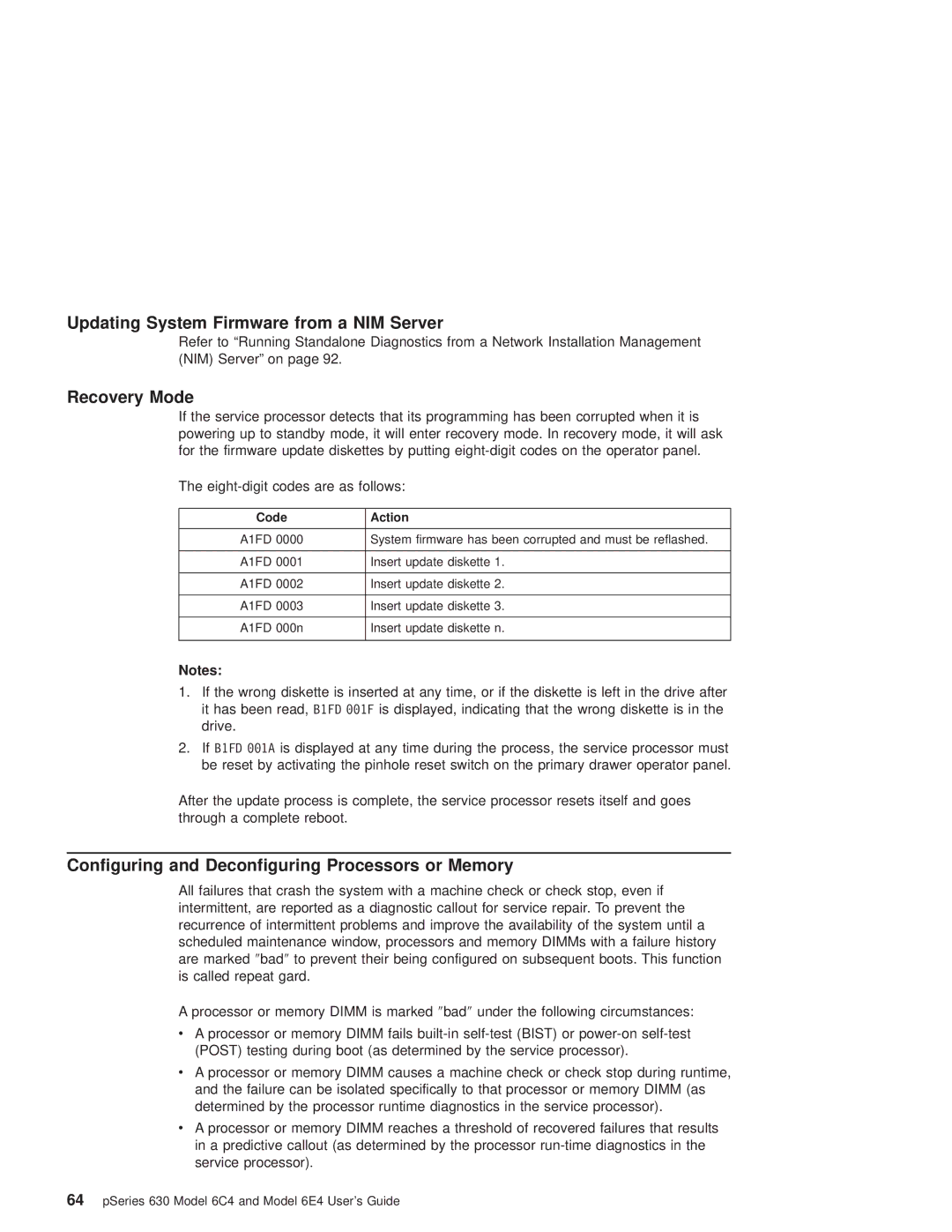Updating System Firmware from a NIM Server
Refer to ªRunning Standalone Diagnostics from a Network Installation Management (NIM) Serverº on page 92.
Recovery Mode
If the service processor detects that its programming has been corrupted when it is powering up to standby mode, it will enter recovery mode. In recovery mode, it will ask for the firmware update diskettes by putting
The
Code | Action |
|
|
A1FD 0000 | System firmware has been corrupted and must be reflashed. |
|
|
A1FD 0001 | Insert update diskette 1. |
|
|
A1FD 0002 | Insert update diskette 2. |
|
|
A1FD 0003 | Insert update diskette 3. |
|
|
A1FD 000n | Insert update diskette n. |
|
|
Notes:
1.If the wrong diskette is inserted at any time, or if the diskette is left in the drive after it has been read, B1FD 001F is displayed, indicating that the wrong diskette is in the drive.
2.If B1FD 001A is displayed at any time during the process, the service processor must be reset by activating the pinhole reset switch on the primary drawer operator panel.
After the update process is complete, the service processor resets itself and goes through a complete reboot.
Configuring and Deconfiguring Processors or Memory
All failures that crash the system with a machine check or check stop, even if intermittent, are reported as a diagnostic callout for service repair. To prevent the recurrence of intermittent problems and improve the availability of the system until a scheduled maintenance window, processors and memory DIMMs with a failure history are marked ″bad″ to prevent their being configured on subsequent boots. This function is called repeat gard.
A processor or memory DIMM is marked ″bad″ under the following circumstances:
vA processor or memory DIMM fails
vA processor or memory DIMM causes a machine check or check stop during runtime, and the failure can be isolated specifically to that processor or memory DIMM (as determined by the processor runtime diagnostics in the service processor).
vA processor or memory DIMM reaches a threshold of recovered failures that results in a predictive callout (as determined by the processor
